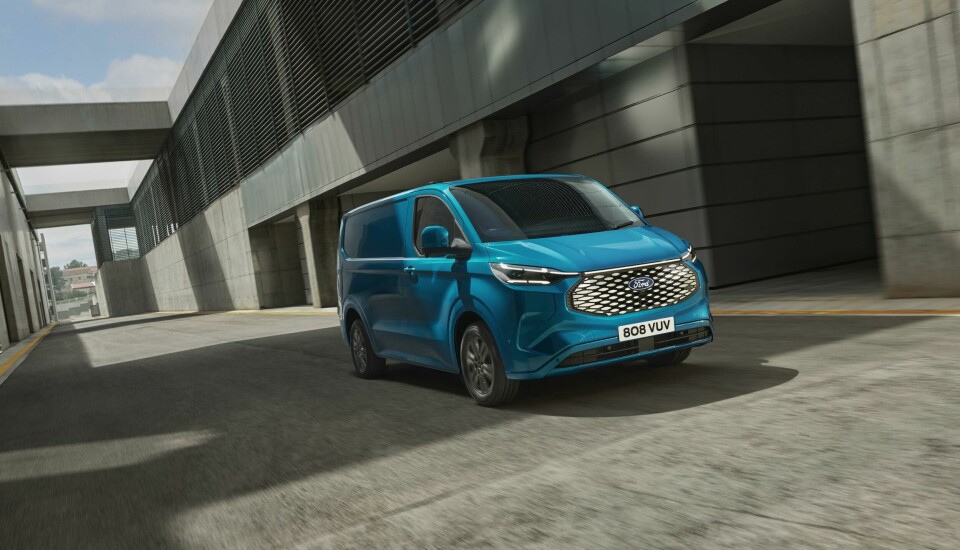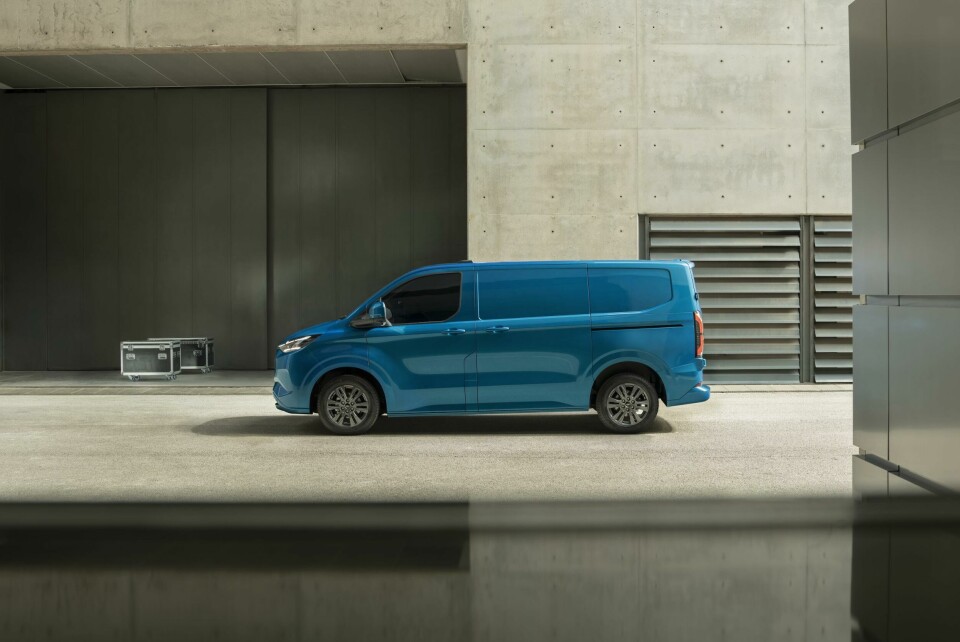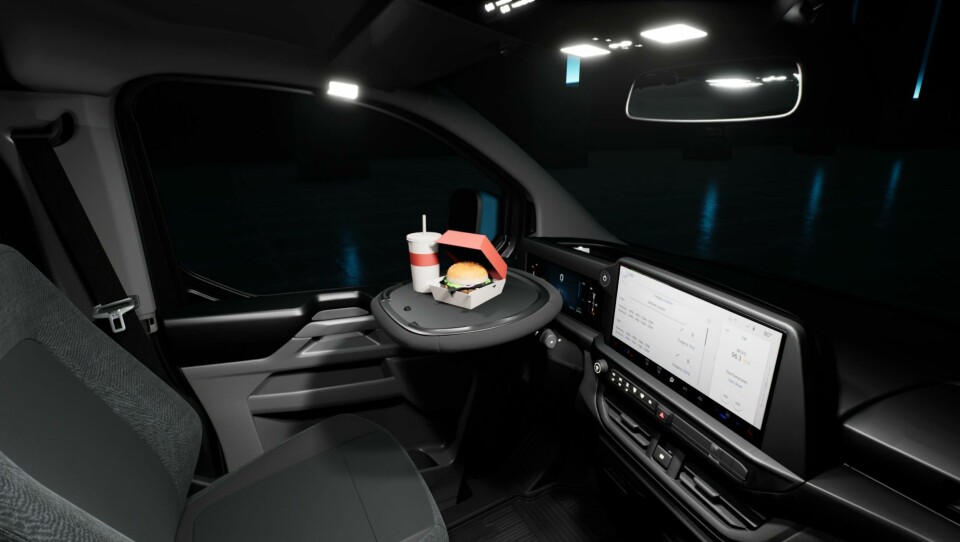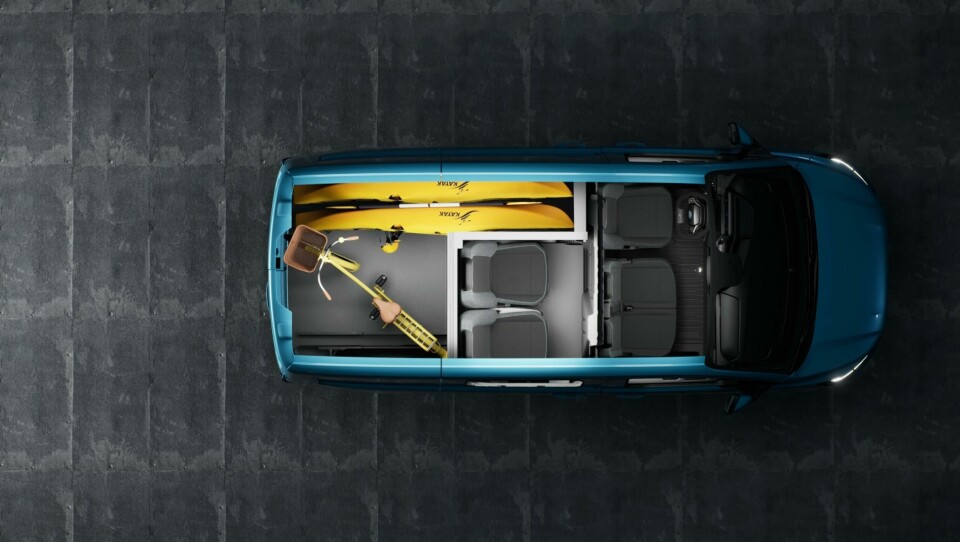
Ford launches the E-Transit Custom
Ford has revealed its electrified E-Transit Custom, which, thanks to a close collaboration between design, engineering and research teams is chock full of innovation. Car Design News spoke to design director Amko Leenarts and head of D-Ford Usha Raghavachari
“This is the most important vehicle for Ford of Europe,” says Amko Leenarts, design director for Ford of Europe. “And not just because it has a huge impact on businesses all around Europe. It is the best-selling car so we have to deliver something exciting. That kind of pressure is stimulating in a really positive way.”
Leenarts spoke to Car Design News as the Ford E-Transit Custom van was revealed to the global audience from a cavernous, not to mention stiflingly hot, broadcasting studio at Olympic legacy project Here East in east London.
The post-industrial setting, which is home to D-Ford, seemed appropriate to a machine that has kept businesses going for the best part of 60 years: former warehouses transformed into 21st century co-working spaces. As Leenarts says, the E-Transit Custom is a hugely significant vehicle for Ford, so much so that even after four years in development you will not be able to buy it until late 2023.

In terms of design, the E-Transit Custom owes much to the close working relationship between Leenarts’ team and the OEM’s research arm D-Ford, which led to some interesting innovations, such as a tilting steering wheel, greater storage space thanks to an L-shaped bulkhead and repositioned airbags. More of that later.
Commercial customers are natural born hackers
Formwise, the first thing you notice is that this is a sleeker, more aerodynamic van, which is under two metres tall. “We made it as slippery as we possibly could,” says Leenarts. In practice, that makes for a softer form with a porous honeycomb grille that references the Ford oval. “It needed to look dynamic and futuristic so you have this coast-to-coast daytime running light signature that has a digital feel to it.” The side elevation is defined by a strong shoulder line and pinched in flanks that create lithe muscles. In short, it looks quick.
The lower load bay will come as a relief for those delivery drivers and the like who spend large parts of their day in and out of their vans. “When you are stepping in and out of a vehicle 200 times a day, that becomes a very significant change,” says Leenarts. Despite the lowered form, the E-Transit Custom has gained 0.7 cubic metres.
But there is more to it than that. Whereas before no one cared what powered your van, in the age of EV, your choice of powertrain is an expression of your business values. And so, the E-Transit Custom gets a white Ford oval instead of a silver one and has its own unique aqua blue launch colour.

But the really noticeable changes have gone on inside. The first is a nifty little innovation that allows the user to tilt the steering wheel at an angle to prop up a tablet or fold completely flat to create a table for lunch or a laptop courtesy of a rubberised disc that clips on the rim.
One of the drivers had removed the bevel from the radio and wedged a piece of wood in the gap as a table
“We have been looking at how to move the steering wheel but usually we use the entire steering column,” says Leenarts. ”The ‘aha’ moment came when we got rid of that third spoke and just used the rim itself. We no longer needed any steering column technology or anything too complicated or special. We expect customers are going to hack it and add surfaces – they (commercial customers) are natural born hackers.”
The tilting steering wheel is illustrative of the close relationship with the D-Ford research team, who, as lab director Usha Raghavachari explains, spend enormous amounts of time following their customers through their working day. Ragavanchari jokingly refers to it as “super-stalking”, which provides the design team with the sort of insight you will never get from a customer survey. “One of the drivers had removed the bevel from the radio and wedged a piece of wood in the gap as a table,” says Raghavachari.

Another breakthrough was born of a chance conversation with a plumber who wanted more space for copper piping so as to avoid strapping it to the roof. The upshot was an L-shaped bulkhead (an engineering challenge to put it mildly) which shifted the battery and allowed a longer load bay. The IP features an expansive 13-inch screen, better integrated than on previous models.
The design team also shifted the passenger airbag to the roof to free up the IP for more storage – Ford is making good on its aim of creating a mobile office. Allied to that is Ford’s over the air update system “Ford Pro”, which tracks the location, efficiency and health of the vehicles to help reduce the amount of downtime.
“There is an opportunity to see those pain points for the customer coming from our data. Once we have an E-Transit out there, we are going to get a really good idea as to how uptime looks different in an electric context compared to an ICE vehicle,” says Raghavachari.











